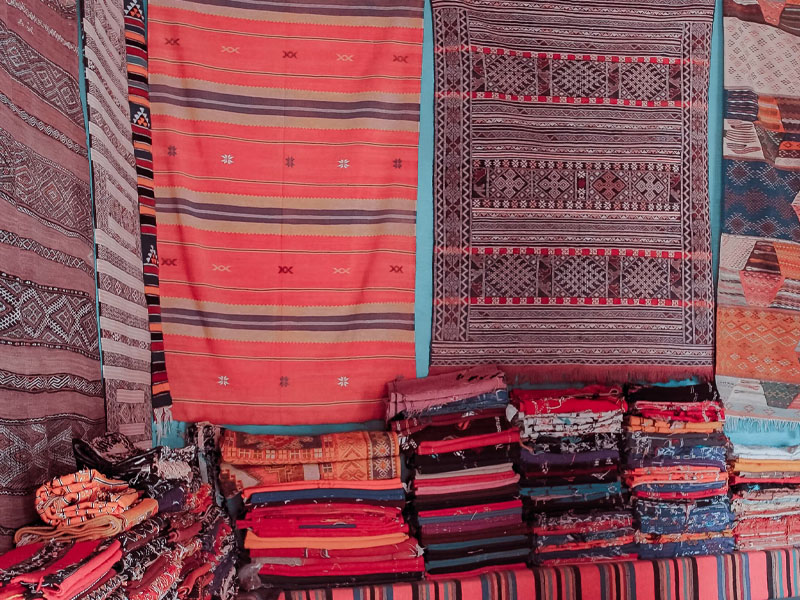Ornamentation on Tunisian Carpets
Issue 44

The Tunisian carpet, which is made of woven fabric or thick wool, is one of the most important applied arts in Tunisia. The carpets are handmade with yarn, with ornamentation and colours that reflect the tangible and intangible elements of people’s lives.
This ornamentation depends on repetitive, symmetrical elements. It is characterised by the diversity and harmony of the colours and other corresponding or contrasting elements that form one unit, which decorates the frame of the carpet.
Ornamentation adds aesthetic and functional value to handicrafts. The decorative unit is the basis of the design and it is organised in one or more lines, depending on the type of ornamentation. There are two types of decorative unit used for ornamentation: geometric units and natural units. It is difficult to determine the number of types or schools of ornamentation, but we will attempt to describe the history of ornamentation and the cultural and ideological influences on Tunisia, and their interaction with the local, Mediterranean and other surroundings.
Since ancient times, Tunisia has experienced the influence of many important civilisations from the Capsians, the Carthaginians, the Romans, the Vandals and the Byzantines to the Islamic civilisation that emerged in Tunisia (Africa), especially the empires of the Aghlabids and the Ottoman. These nations left their mark on art, poetry and architecture.
Although it is difficult to judge the events and history of ancient times, excavations and archaeology offer insights into the lives of primitive people and lead to the development of expectations and theories. Antiques and ruins help to form a picture, which – though incomplete – helps us understand the cultural accumulation and explains the overlaps and convergences in civilisations around the world.
Ornamentation serves as evidence of these civilisations. It is an essential component of art due to the diverse media used whether it is applied to a building, fabric, pottery or metal. It has been subject to technical principles and foundations from ancient times to its appearance in schools of modern art.
Painting and other art forms by primitive man appeared in the caves. In his book ‘The Crafts and the Image of Carthage’, Dr. Mohammed Hussain Fantar wrote that the Tunisian acquired artistic skills a long time ago, and research has revealed paintings in different parts of the Poenis' world.
Suroor Ishturu Milad
Tunisia







































































